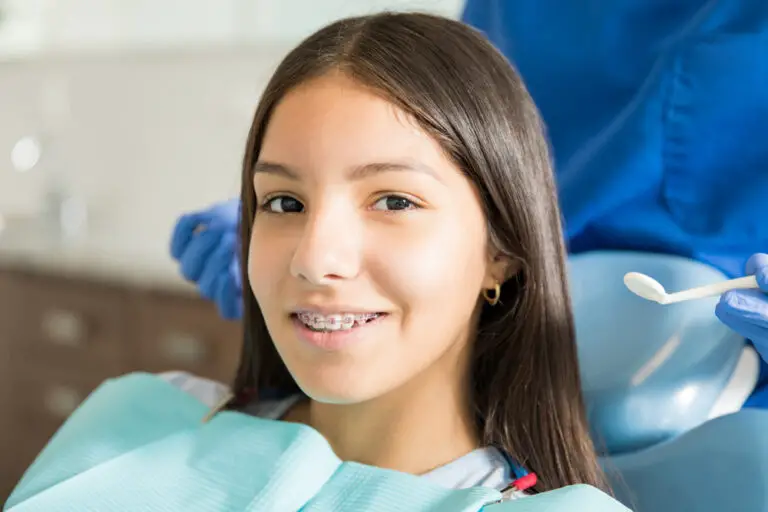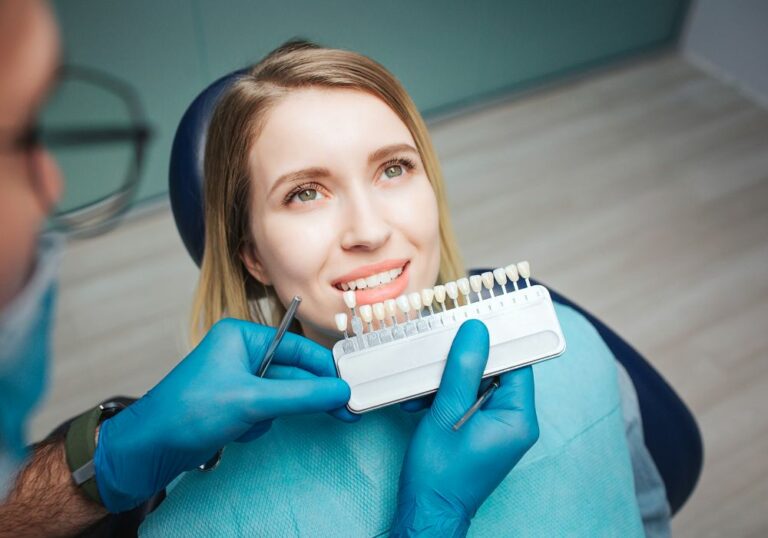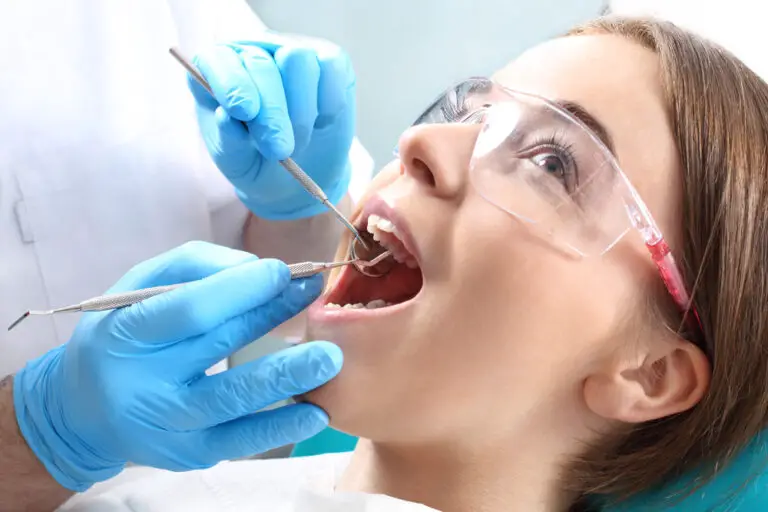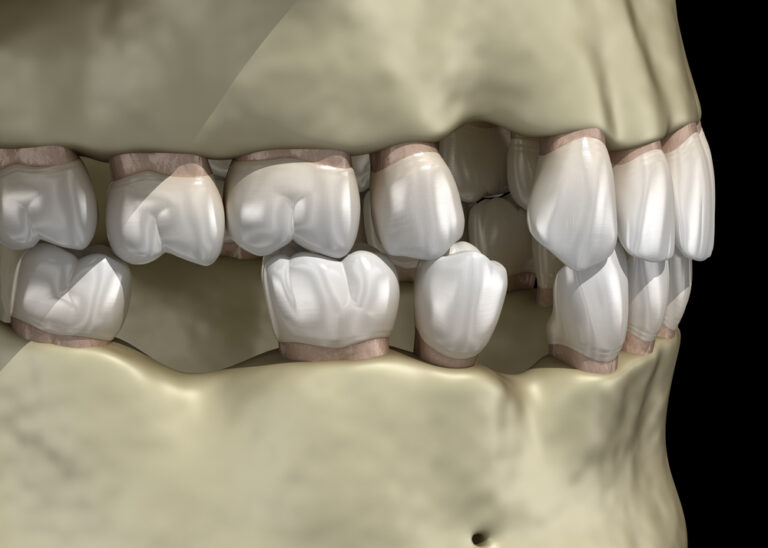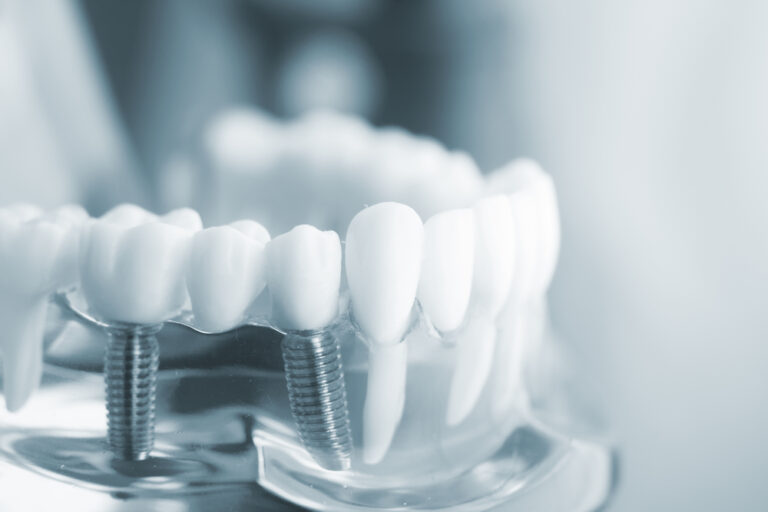Toothache refers to pain originating from within a tooth or the surrounding structures. It ranges from mild sensitivity to severe throbbing pain that can be debilitating. Toothache is a very common dental complaint and can arise from problems like dental decay, infection, injury, grinding, gum disease or sinusitis. Determining the exact cause of tooth pain is important in order to receive appropriate treatment.
Causes of Toothache
1. Dental Caries
Dental caries or cavities are a very common cause of toothache. It arises when plaque bacteria metabolize sugars and produce acids that break down the mineralized enamel and dentin layers of the tooth. As decay progresses deeper, it reaches the inner soft pulp tissue which contains nerves and blood vessels. The pulp becomes inflamed and infected, resulting in spontaneous pain. The toothache can be sharp, sudden or throbbing in nature.
Decay-related toothache typically worsens with hot or cold foods and drinks, as they irritate the already inflamed pulp tissue. Sweet foods may briefly relieve the pain by neutralizing the acids. As the decay advances, the toothache can become more constant and radiate to other teeth or jaw. Tooth decay requires prompt dental treatment like fillings or root canal therapy to remove infection and restore tooth structure.
2. Dental Trauma
Injuries to the teeth from falls, accidents or sports injuries can also cause toothache. Cracks or fractures in the enamel and dentin create pathways for bacteria to enter and infect the pulp. Vertical root fractures are serious splits in the root that can be intensely painful. The fractured portion of the tooth may chip off, leaving the inner pulp exposed and nerves irritated.
Trauma-related toothache worsens with biting or application of pressure. There may be pain on release of pressure as fluid rushes into the crack. Fractured teeth may also be sensitive to hot and cold. Traumatic dental injuries require urgent treatment. Cracks can be stabilized with dental bonding, crowns or fillings. Severely damaged teeth may eventually need root canal therapy or extraction.
3. Periodontal Disease
Gum disease is another common source of toothache. Chronic bacterial infection causes inflammation and destruction of gum tissue, bone and other supporting structures. In advanced periodontitis, the gums recede and pockets form which further harbor bacteria near the root surface.
As gum disease progresses, the inflamed gums have decreased resistance to bacterial toxins reaching the root and inner pulp layer, causing pulpitis. Gum infection can also lead to tooth mobility, erosion of bone and exposure of root surfaces. These symptoms ultimately contribute to toothache. Treating gum disease with deep cleanings, antibiotics and gum surgery can help resolve associated tooth pain.
4. Sinusitis
Inflammation or infection of the maxillary sinuses located above the upper teeth can also cause toothache. Sinusitis is usually caused by a bacterial or viral respiratory infection. There is fluid accumulation and swelling of the sinus membranes adjacent to the teeth. This can lead to diffuse, continuous facial pain including toothache in the maxillary posterior teeth.
Sinusitis tooth pain may be mistaken for a problem with the upper back teeth as the pain is felt in a similar area. Bending over or compression usually worsens sinusitis toothache. Treating the underlying sinus infection with antibiotics, decongestants and sinus irrigation helps resolve the associated dental pain.
5. Bruxism
Bruxism refers to involuntary teeth grinding and clenching, especially during sleep. This exerts very high forces on the teeth and supporting structures. Prolonged bruxism can cause muscle spasms, tissue trauma, tooth damage and wear down of enamel. This damage makes teeth more sensitive and prone to cracking and fracture.
People with severe bruxism often wake up with jaw pain and toothache due to the constant grinding forces applied overnight. Headaches are also common. Addressing sources of stress, wearing a night guard and taking pain medication helps manage bruxism pain. Botox can provide temporary relief.
6. Neuralgic Pain
Toothache may sometimes arise from brain or facial nerve disturbances rather than direct dental causes. Trigeminal neuralgia is characterized by sharp, shooting pains in the face along the trigeminal nerve distribution. This includes toothache that may come and go suddenly or in bursts. Post-herpetic neuralgia following shingles outbreaks can also manifest as tooth pain.
Multiple sclerosis and other central neurological issues affecting sensory signaling can cause neuropathic tooth pain. Anticonvulsant and tricyclic antidepressant medications help relieve nerve-related toothache. Surgery like gamma knife radiation may be done for certain neuralgias.
7. Referred Pain
Referred toothache arises from sources outside the teeth that project pain to the mouth. Ear infections can radiate pain to the jaw and teeth. Jaw joint disorders like temporomandibular joint dysfunction can cause pain perceived as toothache. Myofascial pain from jaw and neck muscle trigger points also lead to referred dental pain. Even migraines can sometimes initiate tooth sensitivity and pain.
Identifying and treating the primary source of referred pain is needed for the toothache to subside. This may include antibiotics for ear infections, TMJ treatment modalities, physiotherapy for myofascial pain or preventive medications for migraine. Basic dental causes need to be ruled out as well.
Diagnosis of Toothache

An accurate diagnosis is needed to determine the exact cause and suitable treatment for toothache. The dentist will begin with a detailed medical history of the patient’s symptoms, onset and duration of toothache and any associated factors. Past dental trauma, recent procedures and preexisting conditions are noted.
A visual oral examination is done to look for dental decay, cracks, gum infection, swelling and sources of irritation. Teeth are tapped gently to check for pain response. Sensitivity testing is done using hot and cold stimuli. Dental x-rays may reveal inner tooth structure and bone damage not visible on the surface. 3D cone beam CT provides detailed images for diagnostic purposes.
Pulp vitality is tested using electric pulp testers. Based on nerve response, pulp necrosis can be identified in case of infection or trauma. Biting on a wooden stick identifies painful teeth with possible fracture. A panoramic radiograph can also detect maxillary sinus abnormalities. Blood tests help diagnose underlying infections and immunological conditions.
Treating Toothache
The treatment for toothache depends on the diagnosed cause and severity of damage.
1. Treating Dental Decay
Mild decay is treated with removal of infected material and fillings or inlays to restore the tooth. More extensive decay requires root canal treatment to clean out pulp infection followed by a dental crown for protection.
For severely damaged teeth, extraction may be done followed by bridge treatment or dental implants to replace missing teeth. Good oral hygiene and fluoride application helps prevent recurrent decay and pain.
2. Treating Dental Trauma
Cracked and fractured teeth need to be stabilized as soon as possible. Minor cracks can be restored with composite bonding or dental crowns. Quick endodontic treatment is needed to remove inflamed pulp and prevent infection in case of pulp exposure.
Root fractures that cannot be stabilized require extraction. Surgical extrusion can be done for teeth with incomplete fractures to regain functionality. Severely displaced teeth may need reimplantation. Follow up and x-rays are done to check for healing.
3. Treating Gum Disease
Non-surgical treatment is done for early gum disease with professional scaling, plaque removal and oral hygiene instructions. Extensive periodontitis requires open flap debridement and bonegrafting. Antibiotics like doxycycline may be prescribed to control infection. Further gum surgery is done if disease persists.
Regular periodontal maintenance therapy helps manage gum infection and prevent recurrence of toothache. In advanced cases, splinting of loose teeth or extraction followed by dental implants provides pain relief.
4. Treating Sinusitis
The sinus infection is treated with nasal decongestants, steam inhalation and sinus rinses. Antibiotics like amoxicillin provide relief in bacterial sinusitis. Chronic sinusitis may require endoscopic sinus surgery for sinus drainage and ventilation. This helps resolve associated sinus-related tooth pain.
5. Managing Bruxism
Reducing life stress, biofeedback, cognitive behavioral therapy and relaxation techniques help control bruxism habits. Wearing a customized night guard protects teeth from grinding damage. Physical therapy can reduce jaw muscle tenderness and spasms. Medications like muscle relaxants may be prescribed in severe cases.
6. Treating Neuralgic Pain
Neurological toothache is managed with medications like carbamazepine, pregabalin, amitriptyline and gabapentin. Transcutaneous electrical nerve stimulation (TENS) helps relieve pain. Surgery like gamma knife radiosurgery is an option for medically unresponsive cases. Addressing underlying conditions like multiple sclerosis also helps.
7. Treating Referred Pain
The primary disorder causing referred toothache needs to be treated, whether it is ear infection, TMJ dysfunction, myofascial pain or migraine. Specific medications or physical therapy provides relief. Ruling out dental causes with radiographs is important as well. The toothache should improve as the source condition is treated.
Home Remedies for Toothache Relief
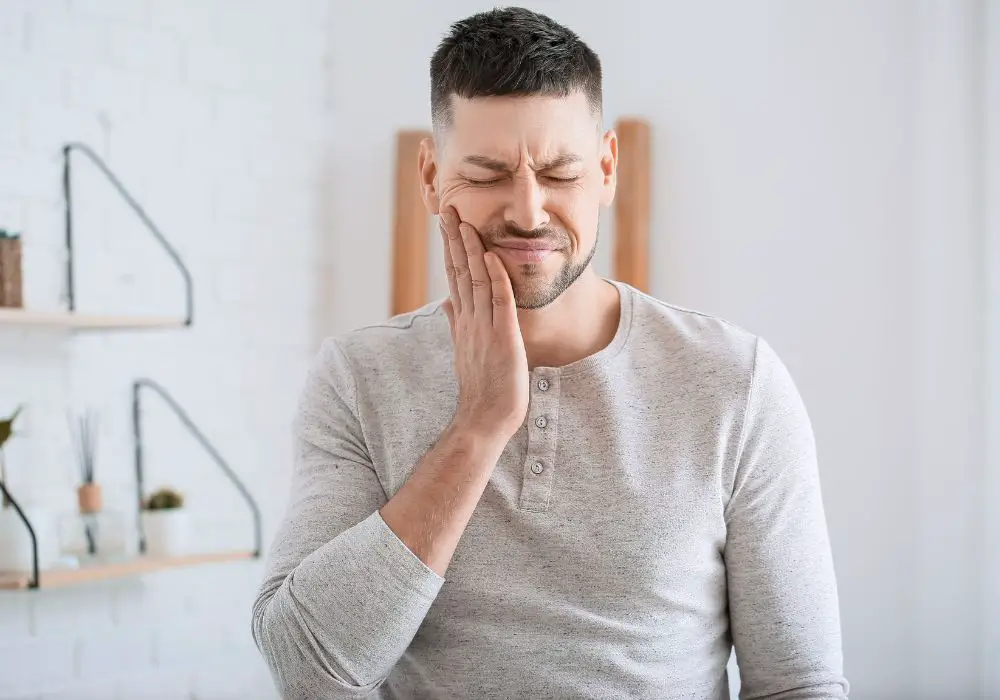
Several home remedies can provide temporary soothing relief while awaiting dental treatment for toothache.
- Salt water rinse: Dissolving salt in warm water and swishing around the mouth draws out fluid from inflamed areas and cleanses debris from the teeth.
- Clove oil: Applying clove oil to the painful tooth gives a numbing effect due to the presence of eugenol which has anesthetic properties.
- Garlic: Chewing raw garlic releases allicin which has antibacterial properties to help fight infection. This can provide temporary pain relief for decay-related toothache.
- Onion: Like garlic, onions also have antibacterial sulfur compounds. Placing a small onion slice directly on an aching tooth may help relieve throbbing pain.
- Oregano oil: The carvacrol in oregano oil inhibits bacterial growth and provides analgesic effects for tooth pain relief.
- Cold compress: Applying an ice pack or cold compress to the cheek near the painful tooth helps constrict blood vessels and reduce inflammation.
- Soft diet: Sticking to soft, lukewarm food avoids putting pressure on tender teeth while awaiting dental work.
- OTC pain medicine: Non-prescription medicines like acetaminophen, ibuprofen and aspirin help temporarily manage toothache pain.
However, these remedies only provide symptomatic relief and do not fix the underlying problem. Proper dental treatment is still required. Seeking urgent care is vital to prevent complications.
When to Seek Emergency Dental Care?
It is advisable to see an emergency dentist promptly if you have:
- Severe toothache that is constant and radiates to the jaw, ears or head
- Difficulty breathing or swallowing
- Tooth pain that wakes you from sleep
- Associated gum swelling, fever, chills or discharge
- Facial swelling, particularly when one eye or side is affected
- Trauma causing extensive tooth damage or pain
- Persistent toothache beyond 3 days
- Post-restoration sensitivity that increases over time rather than resolving
Emergency dental care aims to relieve severe pain, control infection, stop tissue necrosis and prevent other serious complications. Extensive infections left untreated can spread systemically. Seeking urgent care is crucial, especially in medically compromised individuals.
Prevention of Toothache

Practicing good preventive dental care can greatly lower the chances of developing toothache. Recommended measures include:
- Brushing twice and flossing once daily
- Using ADA approved fluoridated toothpaste
- Replacing toothbrush every 3-4 months or after illness
- Following a low-sugar diet
- Regular dental cleanings and checkups every 6 months
- Dental sealants for children on molar teeth
- Night guard for teeth grinding
- Prompt treatment of dental injuries
- Managing conditions like acid reflux
- Quitting smoking and limiting alcohol/caffeine intake
Early identification and treatment of oral health problems prevents progression to more severe infection and damage that can lead to toothache. Still, any persistent or worsening tooth pain should be promptly examined by a dentist.
Conclusion
In summary, toothache arises from a range of dental and medical conditions that must be accurately diagnosed for proper management. While home remedies provide temporary symptomatic relief, seeking appropriate dental treatment can target the underlying source and provide definitive relief in most cases. Proper oral hygiene and regular dental care are key to preventing many causes of tooth pain. However, if severe toothache occurs, it is vital to seek emergency care to relieve pain and stop progression of dental disease.
Frequently Asked Questions
Q1. Can toothache arise from heart problems?
Sometimes heart conditions like angina can radiate pain to the jaw that resembles toothache. But this pain is usually transient, lasting a few seconds to minutes. Persistent tooth pain, especially that worsens with temperature changes or chewing, usually indicates a dental origin rather than heart disease. Still, chest pain should always be evaluated by a doctor.
Q2. Why are some toothaches worse at night?
Toothache often worsens at night while lying down. This may be due to increased blood flow to the head and gravitational fluid shift toward the tooth that increases pressure on inflamed nerves. There are also fewer distractions at night from the pain. Maintaining an elevated head position while sleeping can help reduce nighttime toothache.
Q3. Can tooth infections cause death if left untreated?
It is rare, but severe tooth infections can spread to surrounding facial planes and spaces leading to life-threatening conditions like cavernous sinus thrombosis, Ludwig’s angina or brain abscess. However, most dental infections respond readily to antibiotics and dental treatment. Still, any spreading infection or swelling warrants urgent medical care.
Q4. When does a tooth need to be extracted for toothache relief?
Extraction may be the only option if the tooth is extensively damaged and cannot be repaired with restorative treatments or root canal therapy. It is considered for non-restorable decay, severe periodontal disease, vertical root fractures and profoundly damaged teeth with unremitting pain.
Q5. Can teeth be saved after trauma causing severe toothache?
It depends on the type and extent of injury. Mildly displaced, fractured or avulsed teeth can often be reimplanted, splinted and stabilized to preserve natural tooth structure. But severely mobile, crushed or end-stage infected teeth may eventually need extraction if salvage attempts fail. Prompt treatment gives the best chance of saving traumatized teeth.

